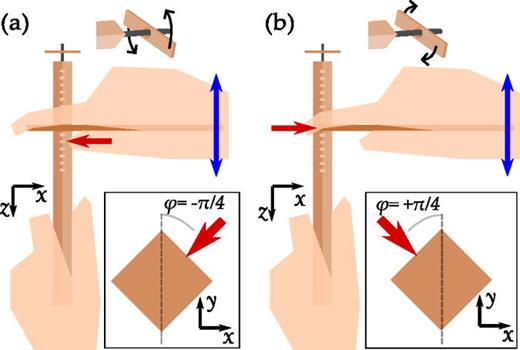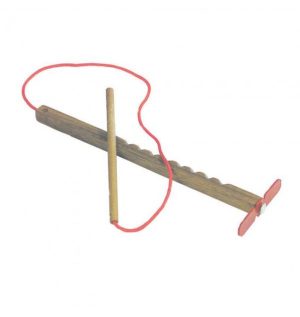Un article ludique par un ancien étudiant en thèse au LIDYL : le Bozo-Bozo
A story with twists and turns: How to control the rotation of the notched stick.,
Martin Luttmann, Michel Luttmann, American Journal of Physics, 2025, 93 (2), pp.137 – 143. ⟨10.1119/5.0225847⟩. ⟨cea-04918165⟩
Le Bozo-Bozo est un vieux casse-tête, probablement inventé par les Nord-Amérindiens. Il est fait d’un bâton cranté au bout duquel est planté un clou, qui sert de de support à une hélice libre de tourner. Lorsque l’on frotte les encoches du bâton, l’hélice se met à tourner. L’article montre que Le secret réside dans la manière dont on tient la baguette qui frotte le bâton cranté : en appuyant avec le pouce sur la face droite du bâton cranté, le clou- hélice tourne dans le sens anti-horaire. A l’opposé, si seul l’index appuie sur la baguette sur la gauche du bâton cranté, l’hélice tourne dans le sens horaire (voir figure). Il et ainsi possible de le faire tourner dans une direction contrôlable.

Voir la démonstration – See the demo.
Abstrat: The notched stick, also known as the Gee-Haw-Whammy-Diddle, is a wooden toy able to convert linear vibration into rotational motion, whose behavior has been intriguing both children and physicists for decades. The oldest scientific article one can find on this subject was published 87 years ago in the present journal. Here, we derive an analytical model of the system, supported by experimental results. We predict the direction of rotation and explain why the device is so easy to operate, even without fine control of the various parameters. The potential importance of the vertical displacement of the finger exerting the perturbation force is also highlighted. We finally discuss similarities between the mechanical system described here and the optical effect of birefringence.


